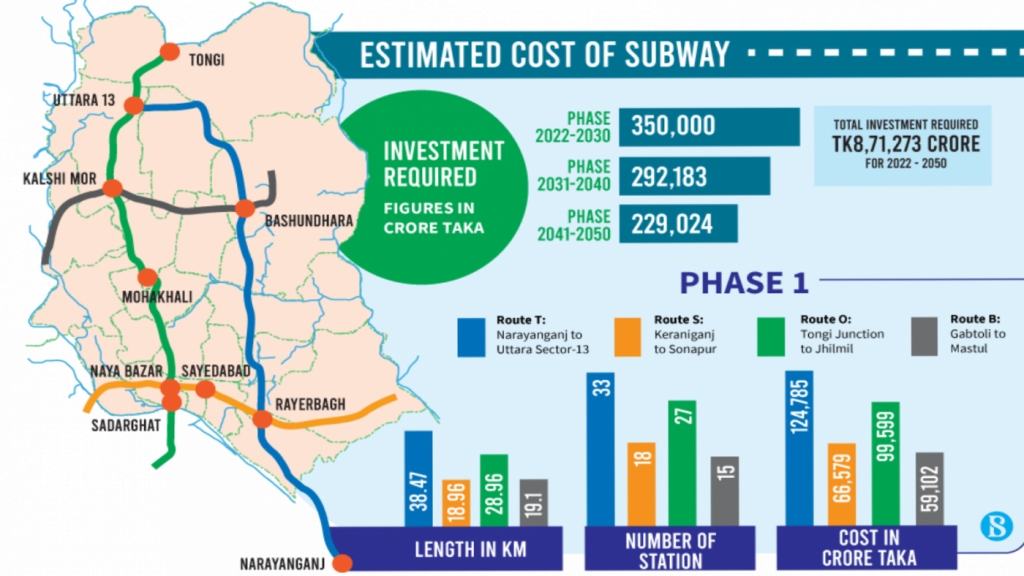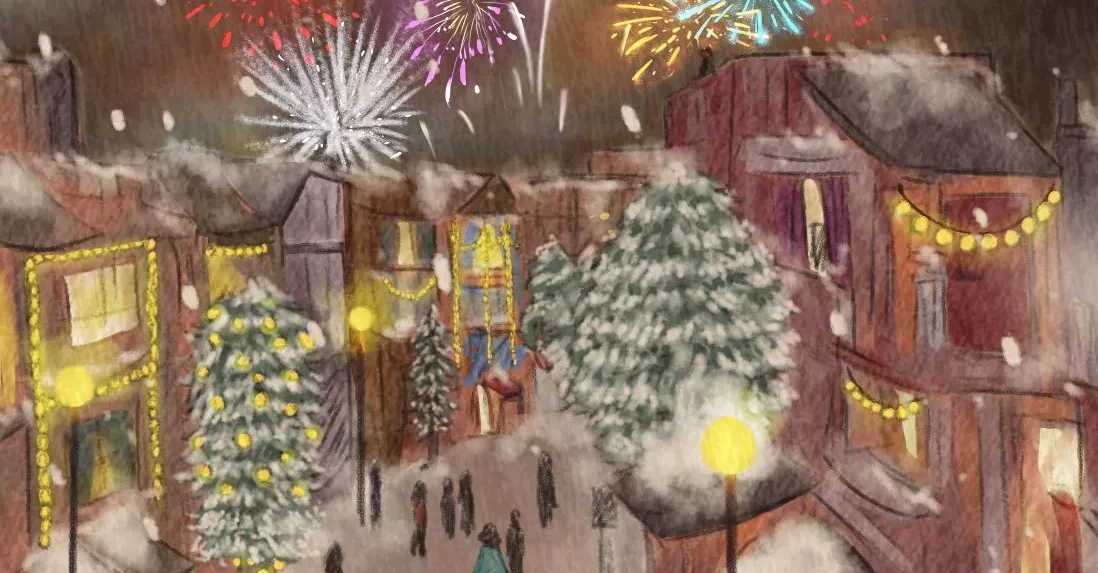Subway Network in the Capital of Bangladesh- A Solution to the Outrageous Traffic Congestion is Afoot

Subway in Dhaka? That’s right, Dhaka dwellers, one of your millions of foreign-country fantasies might just come true, for the infamous traffic congestion centre of Bangladesh is on its way to having a subway network.
We joke about how our parents rush for the airport 6 hours early, but given the present traffic jam situation, we too would anticipate gridlocked roads moments before having to catch a flight- and thus, leave the house several unnecessary hours early. But perhaps our future generation won’t be making jokes about us starting too early for a destination due to the fear of traffic jam. The proposed subway network may take the edge off the insanity of present-day Dhaka traffic, after all.
A feasibility study for the construction of this subway network began in 2018, and the final draft of the study report was presented to the Bangladesh Bridge Authority (BBA) earlier this year. According to the final draft, a subway network of 238km covering 11 routes as proposed is feasible in Dhaka.
However, to see the entire city under a subway network, we have to wait till 2050-2070 at the very least. On the upside, an initial design of 4 out of the 11 proposed routes has been completed, as confirmed by Quazi Muhammad Ferdous, the project director of Dhaka Subway, and the construction work of these 4 routes is expected to be done by 2030.

The first phase of the construction is to be completed in the following routes:
Route B: A 30.51 km line from Gabtoli to the Bholabo junction passing through Golartek, Turag City, National Zoo and Purbachal.
Route O: A 29.35 km long passage from Jhilmil (Keraniganj) to the intersection at Tongi that’ll cross Tegharia Bazar, Muslim Nagar, Sadarghat, Gulistan, Kakrail, Hatirjheel, BG Press, Rajanigandha Market, Bhashantek Government High School, Kalshi, Uttara Sector-17, North Baunia, Uttara Sector-14, Uttara Sector-10, and Masimpur.
Route S: A 19.5 km route from Keraniganj to Sonapur moving along Kamrangirchar, Lalbagh, Chawk Bazar, Noya Bazar, Sutrapur, Sayedabad, Jatrabari, Dhania, Rayerbagh, Matuail, Signboard, Sanarpar, Mouchak, Chittagong Road, and Kanchpur.
And finally, Route T, a 47.54 km route from Jahangirnagar University to Narayanganj’s Chashara via Ashula Model Town East, Uttara Sector-16, Uttara (North), Azampur Kitchen Market, Shah Kabir’s Shrine (North), Aftabnagar (North), Nandipara (West), Green Model Town, Matuail Roaf, Nandipara (South), Barua (South), Bashundhara (South), Sunvalley Uttorpara, Shanir Akhra, Rayerbagh, East Mohhamdbagh, Fatullah Station and DC Office New Court.
The second and third phases are in hopes of being completed with another 4 routes by 2040 and by 2050 with three more routes, respectively.
The feasibility study report forecasts that once fully launched, the underground railway network will cater to almost 50% of the commuters in the city. Just after the first phase of completion, the subway should be able to accommodate around 60 lakh commuters. This will lower the strain on the roads which are now overfull with vehicles and people. Besides alleviating traffic problems significantly, the subway network will ensure quicker, cheaper, and easier travel and raise the city’s economic activity- at least that’s what evidence from other countries with subway networks implies.
The report also states that subway transportation is more environmentally friendly than automotive vehicles as it doesn’t release harmful exhaust fumes that pollute the air.
Road Transport and Bridges Minister Obaidul Quader, too, is optimistic about the subway plans. He considers the introduction of underground rail an essential undertaking in a city built without adequate planning. Also, the subway project doesn’t require the use of land, so traffic will not be harmed, meaning that the city dweller won’t have to suffer because of traffic more than they already are.
One major challenge for this plan to transpire is the high cost it entails. Not just construction, but costs of maintenance and operations of this mode of transport are higher than regular transport modes. With other more important projects to finance, for which funds have not even been accumulated yet, financing the subway project might not be easy for the government.
Also, ensuring a relentless supply of electricity and surface roads completely free from waterlogging to operate the subways are requisites that pose further challenges for the government.
Then there’s the issue of the routes proposed to be running concurrently with the metro rail lines in some areas. Deterring an overlap of the two is an obvious course of action, which, again, wouldn’t be easy.
Yet, chief engineer of BBA and project director of Dhaka Subway, Quazi Muhammad Ferdous, is confident that most of the obstacles that could hinder the completion of the project can be solved using advanced engineering technology, and the cost incurred in this regard would be worth it.
Now don’t lose heart if it seems like a long wait. Waiting this long for the subway plan to materialise is far better than knowing that Dhaka’s insufferable traffic congestion will persist eternally, creating havoc in our daily lives.






Insightful!